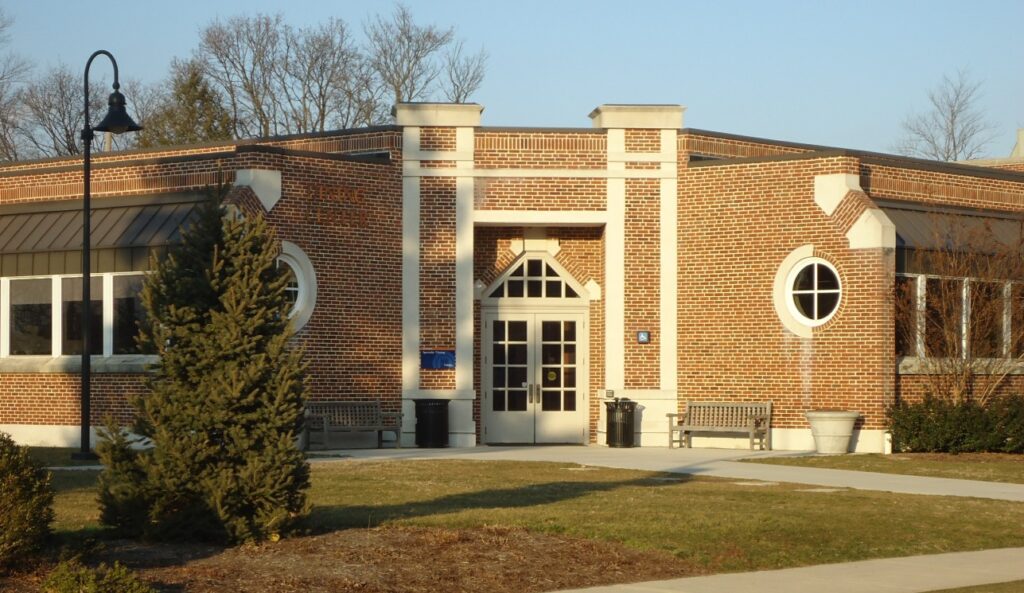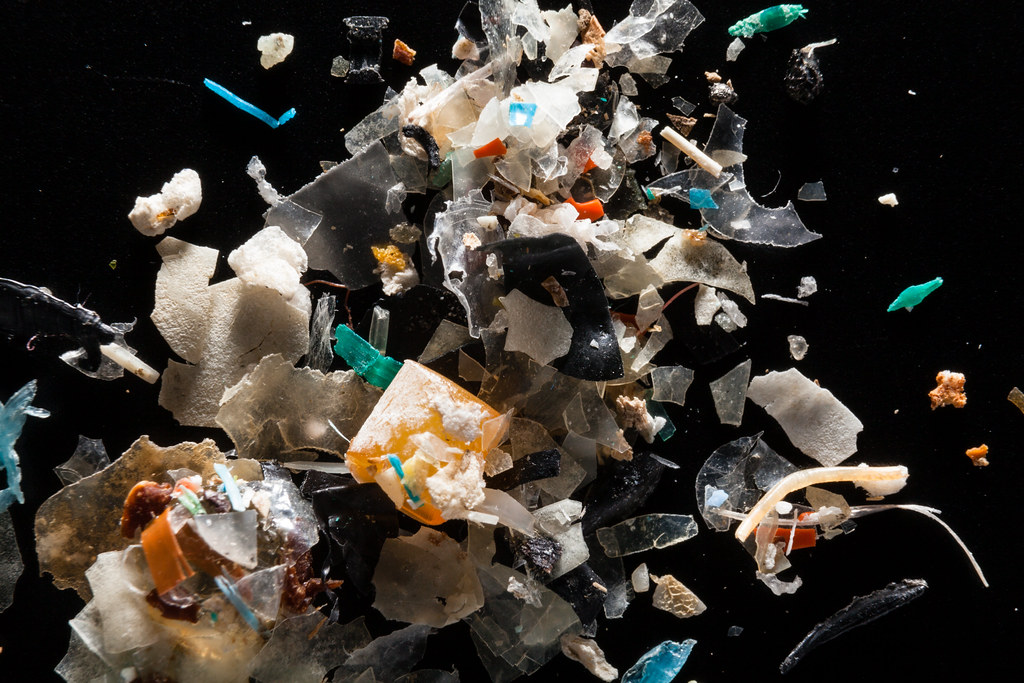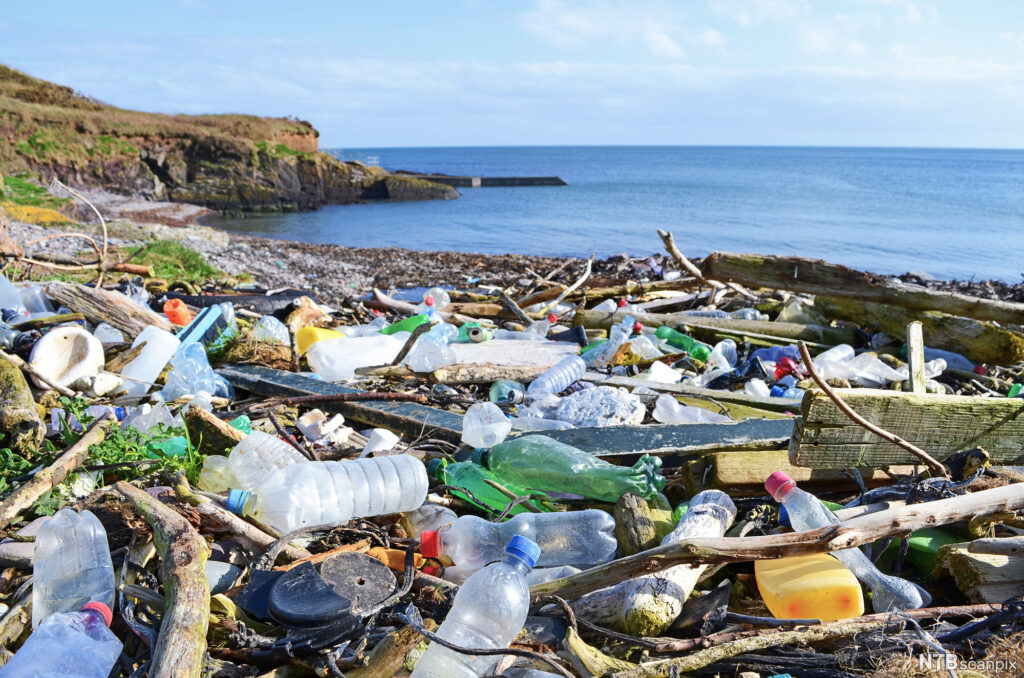Servo To-go, In this Economy?
By Isaias Martinez and Gissel Quechol Raya

As Gettysburg College students were arriving back on campus for Fall 2020 and Spring 2021 the dining center Servo changed its policy on dining. Students would finally be able to have Servo meals to go which would make their lives a lot easier.
However, the campus became littered with mountains of plastic food containers. They were all over Stine Lake and even overflowing in our rooms. The trash cans were full at every hour of the day. All of this while we unknowingly digested thousands of microplastic particles from these single-use plastics.
Many students of Gettysburg College argue that Servo dining should be made available to-go. However, they fail to realize the environmental consequences of this change; the decrease of recycling practices during the pandemic, and even the effects of pollution on public health. However, as students who are aware of the environment and health caused by plastics, Servo to go was not the best decision the school has made.
Initial Reception
Many students argue for Servo to-go based on convenience. The convenience here is being defined as the act of making Servo portable. This is heavily implied by the students we interviewed.
“It was nice to not sit alone since most of my friends were not on campus,” said Kaiulani Sund, a Junior Environmental Studies Major and Public Relations of the Gettysburg Environmental Concerns Organization at the college.
She also added that it was nice to take the meal and enjoy activities like watching a movie in her dorm. Most students would agree with statements like these because, frankly, it’s true. Making Servo to-go was a good move on the college’s part to try and mitigate the COVID situation while also providing students with food-to-go but that does not excuse the negative impacts it had on college life.
Now, we know that students are really for this idea but do they realize the impacts of the decision? The amount of plastic pollution had profound impacts on the amount of trash on campus, public health, and the college’s sustainability plans which is why servo should not be offered to-go.
Microplastics
As plastic waste is left out everywhere, its decomposing release is called microplastics which cause more harm than regular plastic. Microplastics are present in many plastic items we use on take-out meals.
As Servo changed their meal option to be take-out, the negative impact from the single-use plastics increased greatly on the campus community.
We infer that the type of container used for meals was polypropylene (PP). A peer-reviewed study on the different types of plastics that are used for takeout describes that the proportion of flaking microplastics in PP was about 32 percent (Du et al. 2020).
Humans consume microplastics through take-out containers, table salt, tap water, and dust (Du et al. 2020). Yet it was also studied that a person may ingest from 12-203 microplastics in a week (Du et al. 2020).
If you do the math, that means students consumed thousands of microplastics over the last year due to the increased use of plastic containers on campus.
As a consequence of the pandemic, carry-out/take-out became more popular to adhere to social restrictions. However, many restaurants were struggling when it came to choosing what containers were going to be utilized.
Some restaurants were implementing reusable containers such as Tavolino who claims they try to use microwaveable containers and dishwasher safe (Fredrich 2021). Trying to opt for a less plastic usage container can be costly due to the type of material used for containers.
Not only are microplastics absorbed by the meal consumption from plastic containers but they are also leaching into the ground and the oceans.

Plastic & Your Health
A peer-reviewed study on the effect of microplastics says plastic can affect human health because of the toxins of the chemicals being absorbed by the environment. These microplastics and plastics can cause lung injuries, liver function changes, insulin resistance, development of offspring in the womb, reproductive system, and brain function (Karbalaei et al. 2018).
An additive called phthalate esters is used in plastic to enhance the flexibility and durability of plastic yet when they are exposed to human intake it can cause abnormal sexual development and even birth defects (Karbalaei et al. 2018). All of these adverse health effects are amplified by the increased volume of plastic provided by Servo.
Plastic & the Environment
Moreover, the environmental impacts for the containers are mostly in the places where the containers end up.
Sund said, “It was hard to see all of the bags and containers.” When asked about where she had envisioned all of the trash Sund said, “… in the ocean.”
It is not far off to make this assumption, however, the impact is much more local than you think. When we discuss all of this health in plastic pollution, it all stems from local sources. All of the trash we saw piled up in the trash bins could eventually leach into water supplies and other domestic resources. Not only harming the ecosystem around us but also our health. However, not all is bad as the campus has recently decided to revitalize sustainability efforts which were held back during the pandemic due to changes like Servo to-go.

Efforts You Can Support
To attack these issues associated with waste produced from food services like the Bullet Hole and Servo to-go, organizations like GECO have stepped in to educate people on sustainability practices on campus. The latest example is the reusable green containers from the Bullet Hole. Thanks to Kaiulani, who was able to give us information on the latest for campus sustainability.
When getting food from the Bullet Hole, you would ask the servers for a reusable container and at the register, and an eight-dollar deposit would be made. Every time you come in you can switch out your container to be washed and another one and receive a token to avoid the initial fee. Those eight dollars can be recovered at the end of the semester with the return of the container. Many people do not know about this and it would be a great way for sustainability to be continued on campus.
However, there are also several departments on campus that supply students with tools for sustainability. Good examples would be the Religious Studies and the Latin American Caribbean and Latino Studies Departments give their majors reusable water bottles and reusable tote bags respectively.
The college has also had an active sustainability committee since 2009 with input from the Environmental Studies Department and different student organizations on campus. They made an action plan and set many goals for themselves. Broader projects in this scene have included upping recycling awareness on campus through programs and inducting a new recycling truck.
While the Servo to-go option does not seem to be the best for the environment, the college’s sustainability plans, and our public health. Now that you know the implications of this decision, what do you think about making servo to-go now?
Sources
Du, F., Cai, H., Zhang, Q., Chen, Q., & Shi, H. (2020). Microplastics in take-out food containers. Journal of Hazardous Materials, 399, https://doi.org/10.1016/j.jhazmat.2020.122969N.PAG
Emanuel, R. and Adams, J.N. (2011), “College students’ perceptions of campus sustainability”, International Journal of Sustainability in Higher Education, Vol. 12 No. 1, pp. 79-92.
Fredrich, L. (1970, May 29). Let’s talk about the environmental impact of carry-out (it’s complicated). OnMilwaukee. https://onmilwaukee.com/articles/environmental-impact-of-carry-out.
Gallego-Schmid, A., Mendoza, J. M. F., & Azapagic, A. (2019). Environmental impacts of takeaway food containers. Journal of Cleaner Production, 211, 417–427. https://doi.org/10.1016/j.jclepro.2018.11.220
Karbalaei, S., Hanachi, P., Walker, T.R. et al. Occurrence, sources, human health impacts and mitigation of microplastic pollution. Environ Sci Pollut Res 25, 36046–36063 (2018). https://doi.org/10.1007/s11356-018-3508-7
Kecinski, M., Messer, K. D., McFadden, B. R., & Malone, T. (2020). Environmental and Regulatory Concerns During the COVID-19 Pandemic: Results from the Pandemic Food and Stigma Survey. Environmental & Resource Economics, 76(4), 1139–1148.
McCormick, E. (2020). ‘It’s all on hold’: How covid-19 derailed the fight against plastic waste.
Newburger, E., & Lucas, A. (2020, June 28). Plastic waste surges as coronavirus prompt restaurants to use more disposable packaging. CNBC. https://www.cnbc.com/2020/06/28/coronavirus-plastic-waste-surges-as-restaurants-use-more-disposable-packaging.html.
Lauver, O.R. November 4, 2021, Personal Communication, In-Person
Seltenrich, N. Hidden threats in your takeout: With food delivery orders up, so are unintended consequences. Orb Media. (n.d.). https://orbmedia.org/disposablesoverview.
Sund, K.. November 3, 2021, Personal Communication, In-Person
Rume, T., & Islam, S. M. D.-U. (2020, September 17). Environmental effects of COVID-19 pandemic and potential strategies of Sustainability. Heliyon. https://www.ncbi.nlm.nih.gov/pmc/articles/PMC7498239/.
Wolf, J. (2021, May 13). The truth about the environmental impact of Takeout Food. Sustainable Review. https://sustainablereview.com/environmental-impact-of-takeout-food/.
Yang, H., Ma, M., Thompson, J. R., & Flower, R. J. (2018). Waste management, informal recycling, environmental pollution, and public health. Journal of Epidemiology and Community Health, 72(3), 237–243. https://doi.org/10.1136/jech-2016-208597


